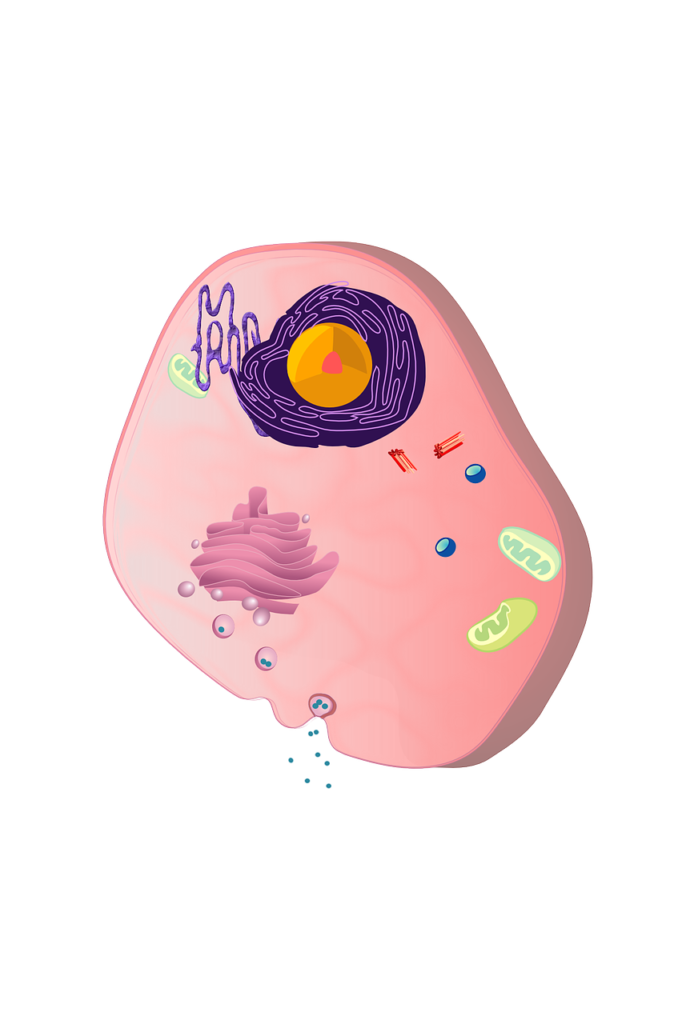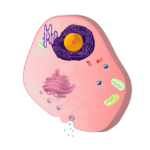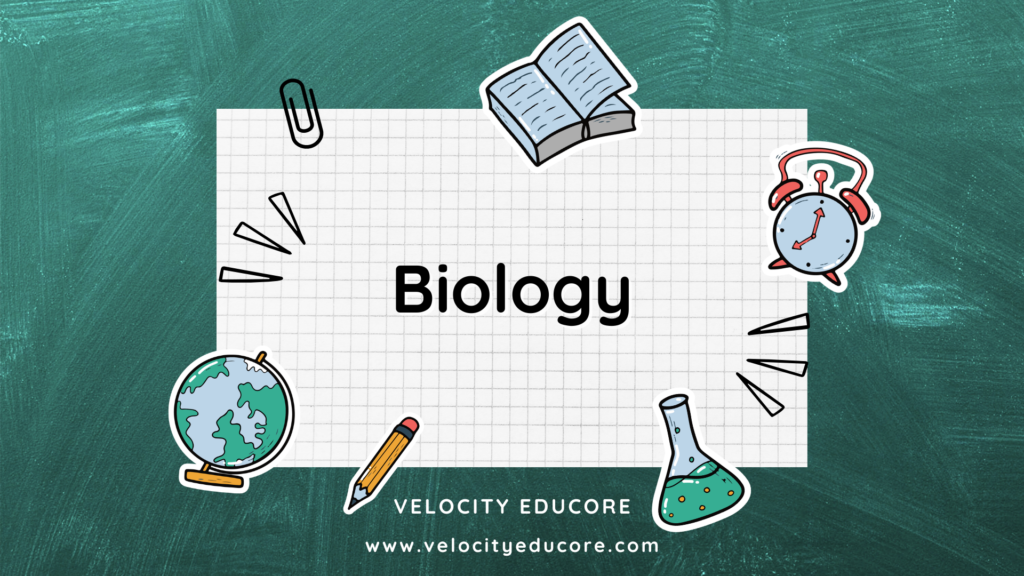Cells – “The basic unit of life”
The cell, a universe of activity and function, holds within its walls the secrets of our existence. Join me as we explore the intricacies of this fascinating world and discover the vital role cells play in our lives. Let’s begin with a beautiful poem written by me on cells. The title for the poem is “The Building Blocks“
“The Building Blocks“
A cell is like a city, with walls so strong
A universe of life, where everything belongs
From the membrane that surrounds, to the organelles within
The cell is the building block, of all living kin
The nucleus holds the code, the DNA
The blueprint of life, that guides the way
The mitochondria, the power source,
Convert fuel to energy, with such force
The endoplasmic reticulum, the transport hub
The Golgi apparatus, the package club
The lysosomes, the recycling crew
All working together, to make the cell new
The cell is the foundation, of all life we see
The building block of all, that will always be
So let us learn and explore, this tiny world within
The cell, the foundation, of all living kin.

Cells are the basic unit of life. They are the smallest unit of an organism that can carry out all the functions necessary for life. Cells come in many different shapes and sizes, and they perform a wide range of functions.
There are two main types of cells: prokaryotic cells and eukaryotic cells. Prokaryotic cells are simple cells that do not have a nucleus or other membrane-bound organelles. Eukaryotic cells are more complex and have a nucleus and other membrane-bound organelles.
All living organisms are made up of one or more cells. Some organisms, such as bacteria, are single-celled, while others, such as humans, are multicellular. Multicellular organisms are made up of many cells that work together to perform specific functions.
The structure of a cell is closely related to its function. The cell membrane is a thin, flexible barrier that surrounds the cell and controls what enters and leaves the cell. The cytoplasm is the gel-like substance that fills the cell and contains all the cell’s organelles. The nucleus is the control center of the cell and contains the cell’s genetic material.
Cells carry out a wide range of functions, such as metabolism, growth, and reproduction. Metabolism is the set of chemical reactions that occur in the cell to maintain life. Growth is the process by which cells increase in size and number. Reproduction is the process by which cells make new cells.
Cells also have a wide range of organelles that perform specific functions. The mitochondria are the powerhouses of the cell and produce the energy needed for the cell to carry out its functions. The endoplasmic reticulum and the Golgi apparatus are involved in the transport and processing of molecules within the cell. The ribosomes are responsible for making proteins.
Great!
Understanding the structure and function of cells is crucial for understanding how living organisms function and for making advances in fields such as medicine, biotechnology, and agriculture. In this article, we will explore the different structures of cells, such as the cell membrane, cytoskeleton, nucleus, mitochondria, endoplasmic reticulum, Golgi apparatus, lysosomes, vacuoles, chloroplasts, and ribosomes, and their specific functions. We will also delve into the functions of cells such as metabolism, cellular respiration, protein synthesis, cell division, and cell communication.
Table of Contents
Introduction
Definition of a cell
A cell is the basic unit of life and the structural and functional unit of all living organisms. It is the smallest unit of life that can carry out all life processes.
The discovery of the cell
The discovery of the cell is credited to Robert Hooke, who first observed and described the structure of cork cells in 1665. Hooke used a microscope to examine thin slices of cork and observed that they were made up of small compartments, which he called “cells.” He published his observations in his book “Micrographia,” which also contained illustrations of the cells he had observed.
However, the true nature of the cell was not fully understood until the development of better microscopes in the 19th century. In 1838, Matthias Schleiden and Theodor Schwann proposed the “cell theory,” which stated that all living things are made up of cells and that the cell is the basic unit of life. This theory was later expanded upon by Rudolf Virchow, who proposed that all cells come from other cells through cell division.
The invention of the electron microscope in the 20th century allowed for the observation of even finer cell structures, such as organelles. This led to a deeper understanding of the complexity and diversity of cells and their functions.
The discovery of the cell has had a profound impact on the field of biology and has led to many important discoveries and advancements in fields such as medicine, biotechnology, and agriculture. It’s also fundamental in understanding many diseases and how to treat them.
Importance of cells in living organisms
Cells are the building blocks of life and are essential for the survival of all living organisms. They carry out all the necessary functions that keep an organism alive, such as metabolism, growth, reproduction, and response to stimuli.
Cell Structure
A. Cell membrane:
The cell membrane, also known as the plasma membrane, surrounds the cell and separates the cell’s internal environment from its external environment.
- Composition: The cell membrane is composed of a lipid bilayer, which is made up of phospholipids and cholesterol.
- Functions: The cell membrane acts as a barrier to protect the cell and regulate the movement of materials in and out of the cell. It also plays a role in cell-to-cell communication and cell recognition.
B. Cytoskeleton:
The cytoskeleton is a network of protein fibers that provides structural support for the cell and helps it maintain its shape.
- Microfilaments: Microfilaments are made of actin and are involved in cell movement and division.
- Microtubules: Microtubules are made of tubulin and are involved in cell division and the maintenance of cell shape.
- Intermediate filaments: Intermediate filaments are made of intermediate filament proteins and provide mechanical stability to cells.
C. Nucleus:
The nucleus is the control center of the cell and contains the cell’s genetic material.
- Structure: The nucleus is surrounded by a double membrane called the nuclear envelope. Inside the nucleus is the nucleoplasm, which contains the chromatin and nucleolus.
- Function: The nucleus controls the cell’s growth and reproduction by storing and distributing the cell’s genetic information.
D. Mitochondria:
Mitochondria are the cell’s powerhouses and are responsible for producing energy for the cell.
- Structure: Mitochondria are membrane-bound organelles with an inner and outer membrane. They contain their own genetic material and are thought to have originated from a symbiotic relationship with ancient bacteria.
- Function: Mitochondria produce energy through cellular respiration, a process that converts the energy stored in food into a form that the cell can use.
E. Endoplasmic reticulum:
The endoplasmic reticulum is a network of flattened sacs and tubules that are involved in the transport, modification, and folding of proteins and lipids.
- Rough endoplasmic reticulum: The rough endoplasmic reticulum is studded with ribosomes, which are responsible for the synthesis of proteins.
- Smooth endoplasmic reticulum: The smooth endoplasmic reticulum is involved in lipid metabolism and the detoxification of drugs and poisons.
F. Golgi apparatus:
The Golgi apparatus is responsible for sorting and modifying proteins and lipids for transport to other parts of the cell or out of the cell.
- Structure: The Golgi apparatus is made up of a series of flattened stacks of membrane-bound sacs.
- Function: The Golgi apparatus sorts and modifies proteins and lipids and directs them to their final destinations.
G. Lysosomes:
Lysosomes are membrane-bound organelles that contain enzymes that break down and recycle cellular waste.
- Structure: Lysosomes are similar in structure to a small vacuole and are formed from the Golgi apparatus.
- Function: Lysosomes contain enzymes that break down and recycle cellular waste, including old cell parts, bacteria and foreign material, and cellular debris. They also play a role in cell signaling and in the immune response.
H. Vacuoles:
Vacuoles are membrane-bound organelles that store and transport materials within the cell.
- Structure: Vacuoles are similar in structure to lysosomes, but are larger and have a specific function of storage.
- Function: Vacuoles store and transport materials such as water, nutrients, and waste products. In plant cells, large central vacuoles store water and other materials.
I. Chloroplasts (in plant cells):
Chloroplasts are responsible for photosynthesis and the production of food in plant cells.
- Structure: Chloroplasts are green, disk-shaped organelles that contain chlorophyll and other pigments. They have an inner and outer membrane and their own genetic material.
- Function: Chloroplasts convert energy from sunlight into chemical energy in the form of glucose through the process of photosynthesis.
J. Ribosomes:
Ribosomes are the site of protein synthesis in the cell.
- Structure: Ribosomes are small, granular organelles made up of RNA and protein.
- Function: Ribosomes read the genetic code stored in DNA and use it to synthesize proteins.
Cell Function
A. Metabolism:
Metabolism refers to all of the chemical reactions that occur within a cell to sustain life. It includes the breakdown of food molecules to produce energy, and the synthesis of new molecules such as proteins and nucleic acids.
B. Cellular respiration:
Cellular respiration is the process by which cells convert the energy stored in food into a form that can be used by the cell, such as ATP.
C. Protein synthesis:
Protein synthesis is the process by which cells use genetic information to produce proteins, which are necessary for the structure and function of the cell.
D. Cell division:
Cell division is the process by which a single cell divides into two or more daughter cells. This is necessary for growth, repair, and reproduction.
E. Cell communication:
Cell communication is the process by which cells receive and respond to signals from other cells. This is necessary for the coordination of cellular activities and the maintenance of homeostasis.
Conclusion
A. Summary of key points:
Cells are the basic unit of life, and all living organisms are made up of cells. Cells have many different structures, such as the cell membrane, cytoskeleton, nucleus, mitochondria, endoplasmic reticulum, Golgi apparatus, lysosomes, vacuoles, chloroplasts, and ribosomes, each with their own unique functions. Cells also carry out important functions such as metabolism, cellular respiration, protein synthesis, cell division, and cell communication.
B. Importance of understanding cell structure and function:
Understanding the structure and function of cells is crucial for understanding how living organisms function and for making advances in fields such as medicine, biotechnology, and agriculture. It is also fundamental for understanding many diseases and how to treat them.
FAQ’s
What is a cell?

A cell is the basic unit of life and the structural and functional unit of all living organisms. It is the smallest unit of life that can carry out all life processes.
What is the function of the cell membrane?
The cell membrane, also known as the plasma membrane, surrounds the cell and separates the cell’s internal environment from its external environment. It acts as a barrier to protect the cell and regulates the movement of materials in and out of the cell. It also plays a role in cell-to-cell communication and cell recognition.
What is the function of the cytoskeleton?
The cytoskeleton is a network of protein fibers that provides structural support for the cell and helps it maintain its shape. Microfilaments, microtubules, and intermediate filaments are the three main components of cytoskeleton, and they are involved in cell movement, cell division and the maintenance of cell shape.
What is the function of the mitochondria?

Mitochondria are the cell’s powerhouses and are responsible for producing energy for the cell. They produce energy through cellular respiration, a process that converts the energy stored in food into a form that the cell can use.
What is the function of the endoplasmic reticulum?
The endoplasmic reticulum is a network of flattened sacs and tubules that are involved in the transport, modification, and folding of proteins and lipids. The rough endoplasmic reticulum is studded with ribosomes, which are responsible for the synthesis of proteins and the smooth endoplasmic reticulum is involved in lipid metabolism and the detoxification of drugs and poisons.
What is the function of the Golgi apparatus?
The Golgi apparatus is responsible for sorting and modifying proteins and lipids for transport to other parts of the cell or out of the cell. It sorts and modifies proteins and lipids and directs them to their final destinations.
What is the function of lysosomes?
Lysosomes are membrane-bound organelles that contain enzymes that break down and recycle cellular waste. They contain enzymes that break down and recycle cellular waste, including old cell parts, bacteria and foreign material, and cellular debris. They also play a role in cell signaling and in the immune response.
What is the function of vacuoles?
Vacuoles are membrane-bound organelles that store and transport materials within the cell. They store and transport materials such as water, nutrients, and waste products. In plant cells, large central vacuoles store water and other materials.
What is the function of chloroplasts?
Chloroplasts are only found in plant cells and are responsible for photosynthesis and the production of food. They convert energy from sunlight into chemical energy in the form of glucose through the process of photosynthesis.
What is the function of ribosomes?
Ribosomes are the site of protein synthesis in the cell. They read the genetic code stored in DNA and use it to synthesize proteins.
What is metabolism?
Metabolism refers to all of the chemical reactions that occur within a cell to sustain life. It includes the breakdown of food molecules to produce energy, and the synthesis of new molecules such as proteins and nucleic acids.
What is cellular respiration?
Cellular respiration is the process by which cells convert the energy stored in food into a form that can be used by the cell, such as ATP.
What is protein synthesis?
Protein synthesis is the process by which cells use genetic information to produce proteins, which are necessary for the structure and function of the cell.
What is cell division?
Cell division is the process by which a single cell divides into two or more daughter cells. This is necessary for growth, repair, and reproduction.
What is cell communication?
Cell communication is the process by which cells receive and respond to signals from other cells. This is necessary for the coordination of cellular activities and the maintenance of homeostasis.


